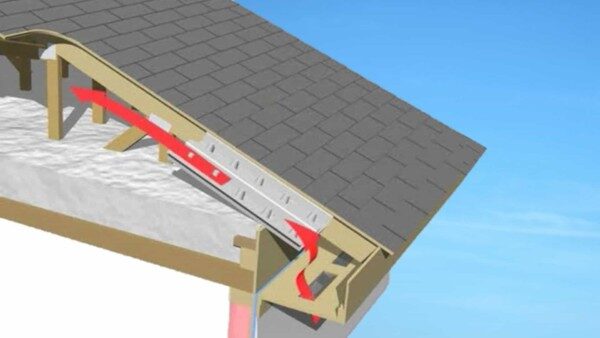The role of baffles cannot be overlooked in a properly insulated attic. While insulation is needed to keep warm (or cold) air from escaping the living space, proper airflow is also required in the attic to prevent buildup of hot, damp air. Baffles ensure that air is directed properly through the attic vents without impeding insulation.
Moisture is the enemy of every attic space. The better insulated the attic, the greater the potential for heat and humidity to be blocked by the insulation, leading to mold growth and rot. Extremely hot air from the attic can also cause damage to roof shingles. Baffles facilitate airflow and reduce heat buildup.
Baffles also prevent the wind that blows through the soffit vents from dislodging insulation. Insulation that gets blown out of place becomes useless, so it is important to retain airflow while reducing wind.
In cases where a heated attic is desired, the rafter bays will be insulated instead of the attic floor. Here, it is crucial that baffles be installed over the length of the rafter bay to prevent heat and moisture from building up under the roof sheathing.
Using baffles also allows for insulation to be installed more efficiently. With baffles in place, insulation can be installed right up to the soffit vents and eaves with no added space. Baffles are first stapled to the roof decking, and then insulation batts or blown insulation can be placed up to the edge of the attic floor.
While insulation is required to keep a home comfortable and efficient, proper airflow is also necessary to prevent mold and rot, as well as heat damage. Baffles ensure proper air circulation through the attic and should always be used with insulation.


